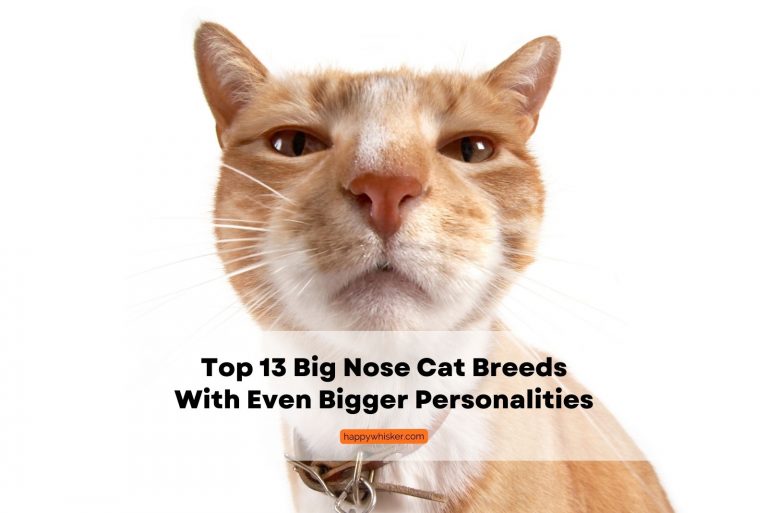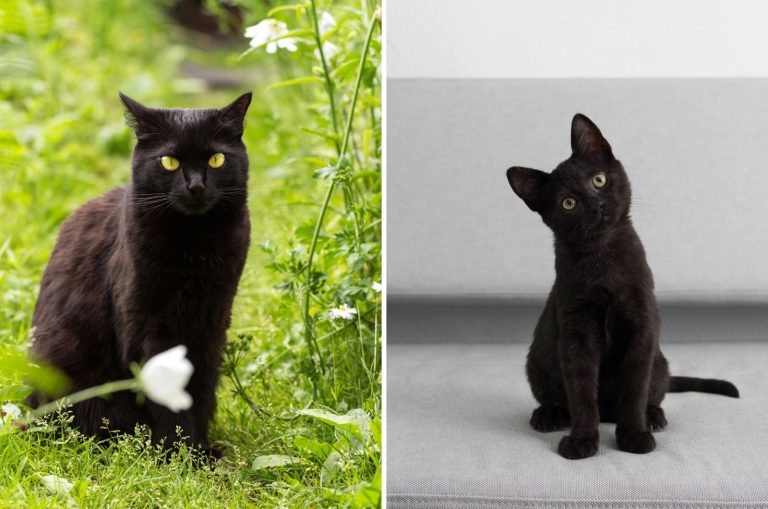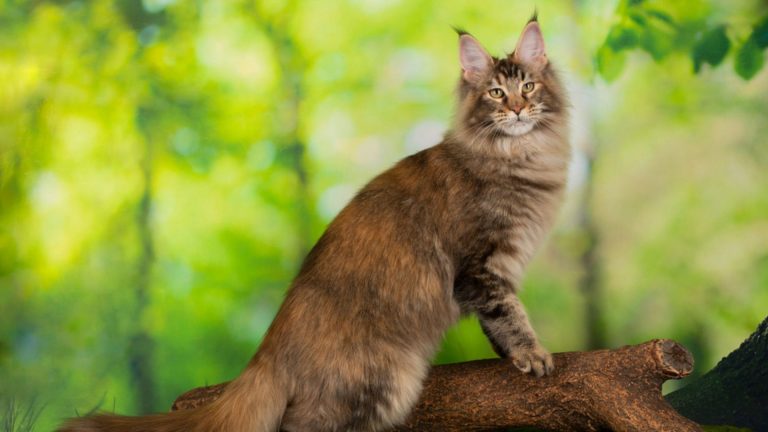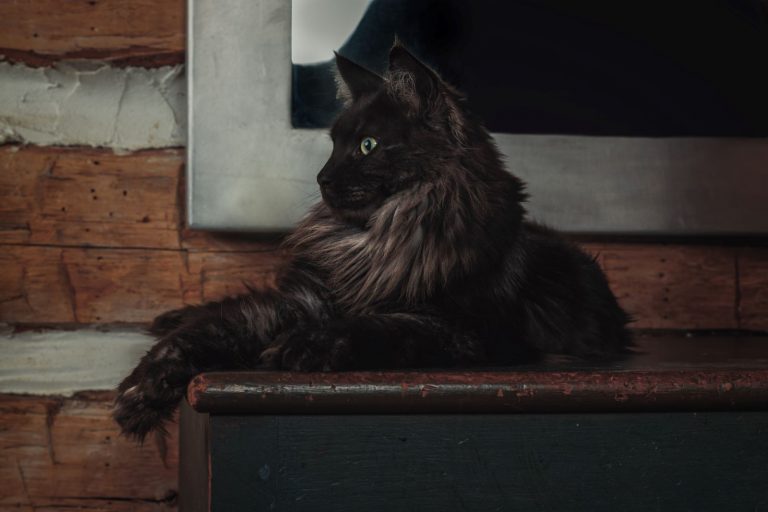The Charm Of Dilute Calico Cats: Everything You Need To Know
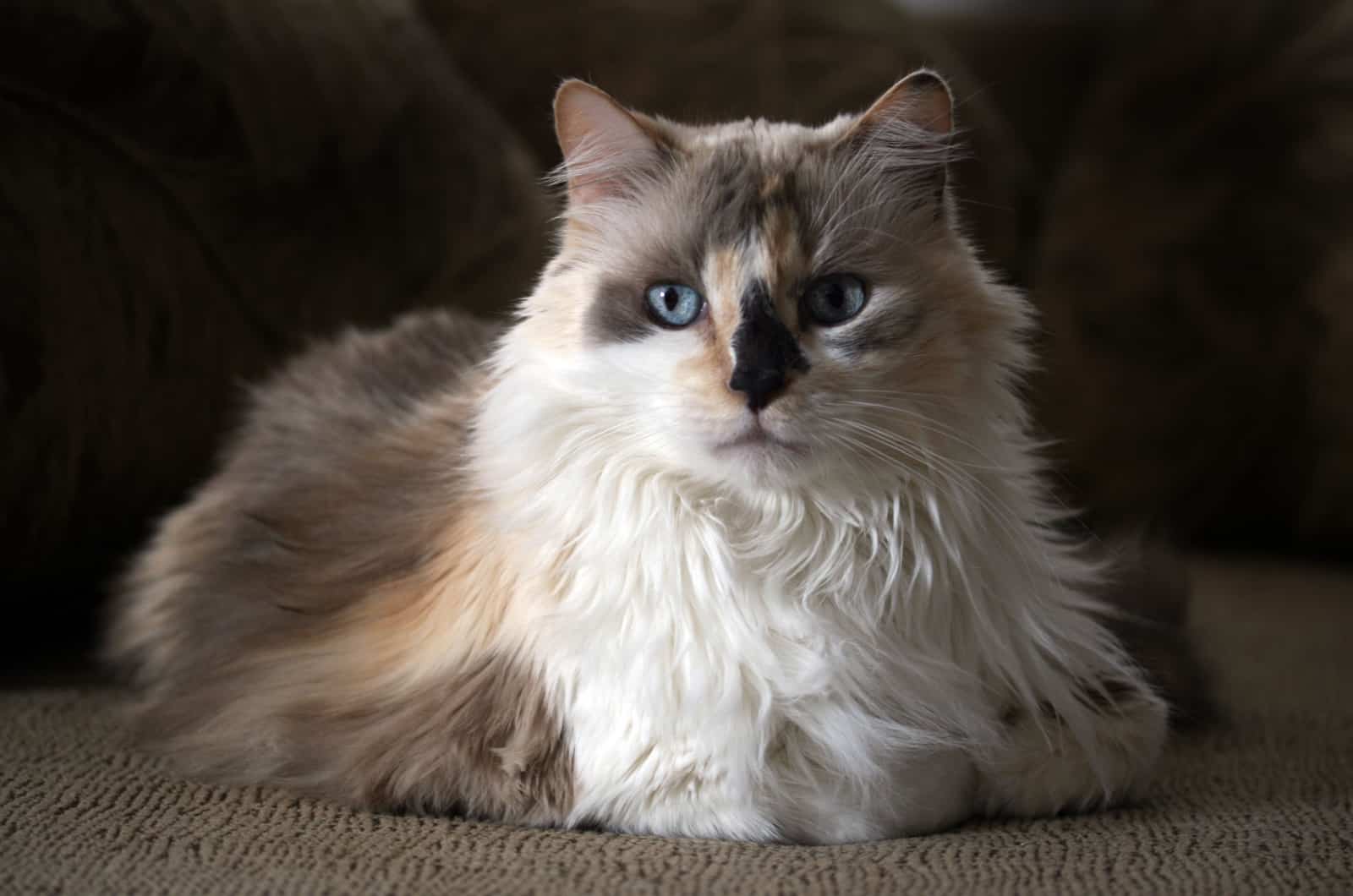
The mysterious dilute calico cats are said to be one of the most gorgeous cats in the cat world, and I’ve got to agree!
These tri-colored cats have the characteristic calico pattern, but with very unique dilute pastel colors!
A dilute calico cat will have a white base fur color with patches of two different colors – either cream or gray, fawn or lilac.
These cats are extremely rare and beloved by many cat fanciers, meaning they are also in high demand, and this is reflected in their prices.
If you want to learn more about these unique kitties, their genetic background, prices, and other fun facts – just continue reading!
What Is A Dilute Calico Cat?
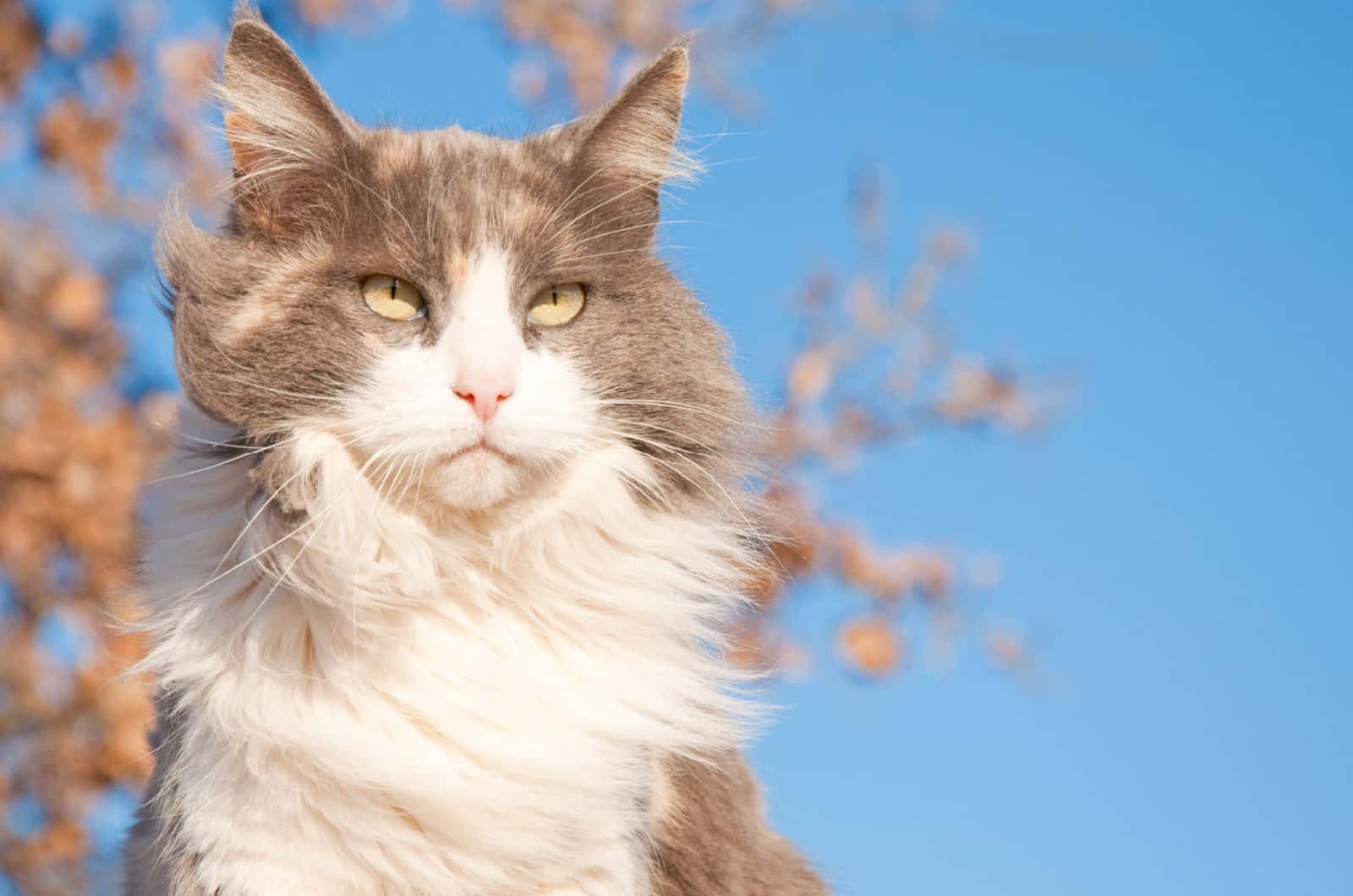
In order to avoid any misunderstandings, let’s first explain what a calico cat and dilute calico cat really are.
What Is A Calico Cat?
A calico cat is a cat of any breed, which has a combination of three colors, arranged in intertwining patches.
The three calico colors are white, black, and orange.
A common misconception is that calico cats are their own distinct cat breed, but that’s not true. Cats of different breeds can be calico, for example – you can have a calico Maine Coon or a calico Manx cat.
What Is A Dilute Calico Cat?
Dilute calico cats, commonly referred to as muted calico cats, only differ from regular calico cats in the fact that their colors are diluted (or muted).
That means that instead of black fur they have grey-colored fur and instead of orange fur they have cream-colored fur (also known as strawberry blond).
The genetics of muted calicos is pretty interesting, as will be explained further below in the article.
Remember, dilute calico cats are not a distinct cat breed, but rather any cats with a certain coat color and pattern combination.
Which Breeds Of Cats Can Be Dilute Calicos?
If you’re wondering which breed of cats you might find wearing the beautiful dilute calico color and pattern, I have a list for you!
Cat breeds known to have members with this beautiful dilute calico coat:
🐾American Shorthair
🐾Japanese Bobtail
🐾Scottish Fold
🐾Arabian Mau
🐾Persian
🐾Maine Coon
🐾Manx
🐾Siberian
🐾Turkish Angora
🐾Norwegian Forest Cat
🐾Ragdoll
🐾Turkish Van
There Are Also Cat Breeds That Cannot Have The Dilute Calico Coat
Although the list of cat breeds known to have dilute calico members is quite long, there are also quite a few cat breeds that cannot have the dilute calico coat.
Those breeds would be:
🐾Siamese cats
🐾Himalayan cats
🐾Bombay cats
🐾Russian blue cats
🐾British shorthair cats
You may notice that these cat breeds are the solid color and colorpoint breeds.
Cat breeds that are exclusively solid colored (such as the Russian blue, for example), or colorpoint cats (such as the Siamese cat) can’t have the calico color and pattern.
Potential Coat Colors Of A Dilute Calico Cat
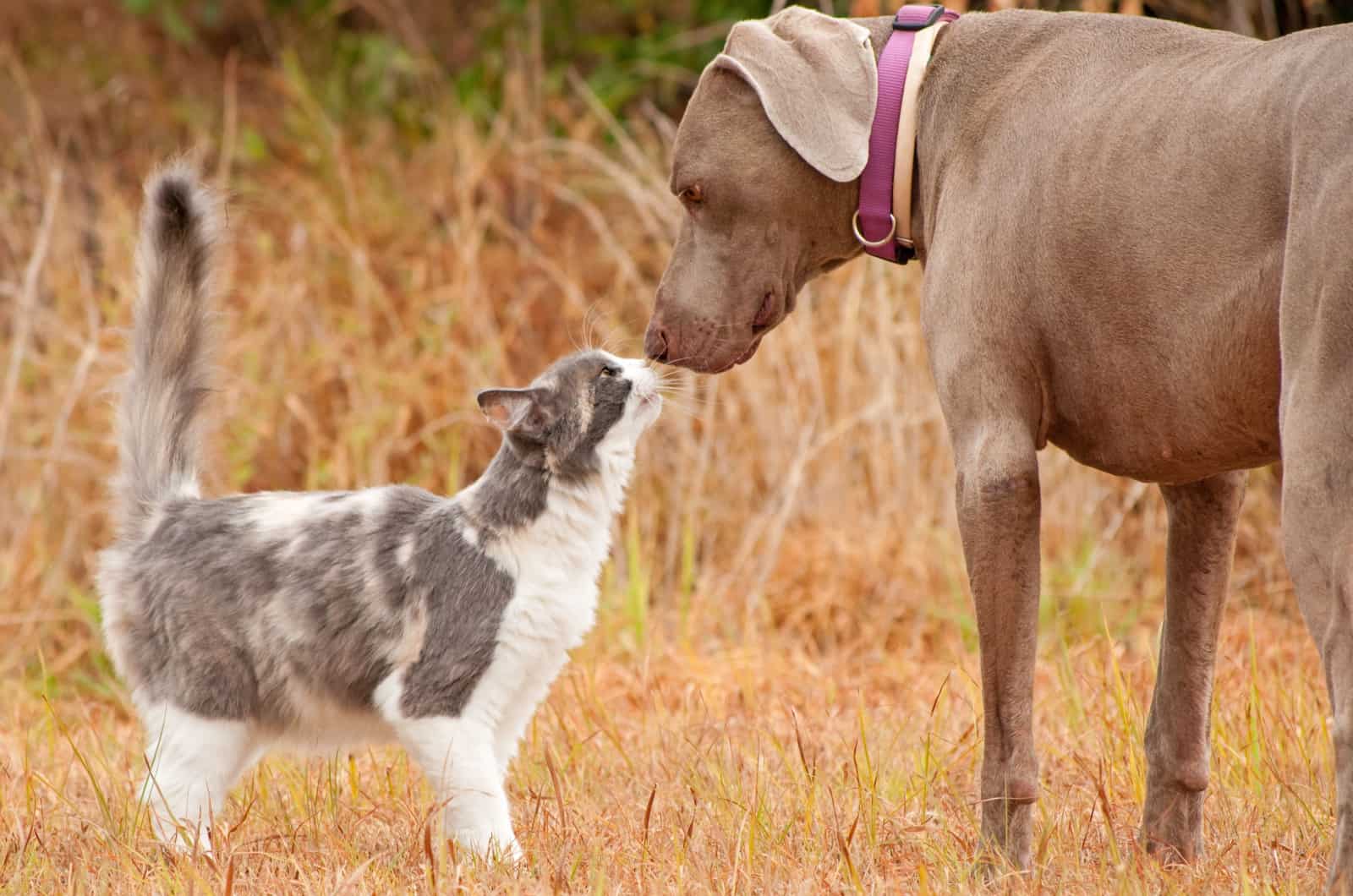
When talking about calicos, it is usually only black, orange, and white colors that are mentioned, but this is not always the case.
It is possible for a cat to have cinnamon or chocolate colored fur instead of the classical black fur.
Like the black fur, the cinnamon and chocolate colors can also be diluted (or muted). Chocolate will become lilac, while cinnamon will become fawn.
As a result, we might observe a diluted calico cat with any of the following three colorations:
• White – gray (sometimes referred to as blue) – cream
• White – lilac (diluted chocolate color) – cream
• White – fawn (diluted cinnamon color) – cream
I find these muted pastel colors absolutely stunning and I would love to one day own a dilute calico cat, just so I can enjoy their pretty colors day after day!
The Beauty Of The Dilute Calico Cat – Genetics!
We have genetics to thank for the amazing creation of dilute calico cats – it was not an easy task! A unique gene combination is required for a cat to be a dilute calico cat.
There are three key genes that result in the creation of the beautiful dilute calico coat, and those are:
• Mosaic gene
• Dilute gene that contains two d alleles at the locus (explained below)
• White spotting gene
The mosaic gene means the cat’s coat will contain both black and orange colors.
Then, these two basic colors (black and orange) are muted by the dilute gene, which creates gray and cream colored coats.
There is one more genetic ingredient when it comes to the color of the coat – the gene locus has to contain two d (recessive) alleles in order to create the muted colors. That means, if the gene locus has one D allele (dominant allele) and one d allele (recessive allele), the cat will most likely be a regular calico cat, since the D allele masks the effect of the d allele.
As calico cats also have white fur, there must be a gene that causes white patches of fur and it’s called the white spotting gene.
Only when a cat has all three genes and the correct allele combination (two recessive alleles for the dilution gene) will it be a dilute calico cat.
Can A Dilute Calico Kitten Be Born From Two Regular Calico Cats?
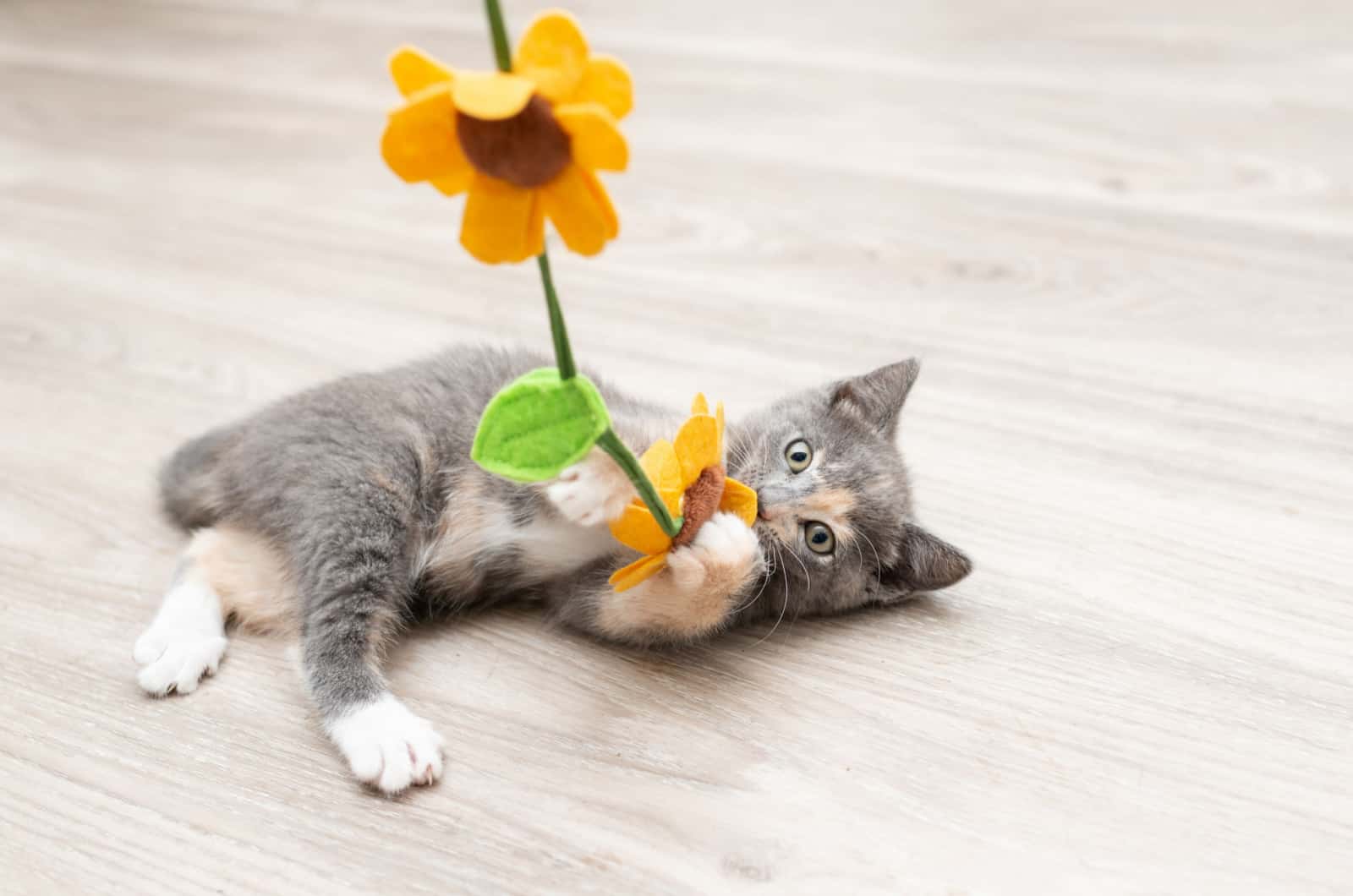
It is common for two ordinary calico cats to give birth to a dilute calico kitten.
As we have seen, dilute calico cats have to have the three key genes – the mosaic gene, the dilute gene and the white spotting gene.
When it comes to the dilute gene, one allele is inherited from the mother and one allele is inherited from the father. All that matters is that the inherited alleles are recessive (d alleles).
Regular calico cats have either:
• One recessive allele (d allele) and one dominant allele (D allele)
• Two dominant alleles
Let’s say both the female cat and a male cat have the first combination – one recessive and one dominant allele. If the kitten inherits one recessive allele from the mother, and one recessive allele from the father – it will be a dilute calico kitten!
This means it is possible for two regular calico cats that carry the recessive d allele to create a dilute calico offspring.
Are Dilute Calico Cats Rare?
You might already be aware that calicos are uncommon, and you might be wondering if muted calicos are too.
Dilute calicos are quite uncommon; in fact, they are considerably rarer than regular calicos.
One typical calico cat is born in every 1,000 cats, and dilute calicos are substantially rarer, so you can imagine how scarce their numbers are!
This means they are very difficult to find in shelters and from breeders, which is sometimes reflected in the price of dilute calico kittens!
Why Are Dilute Calicos So Rare?
Because a cat must “win a genetic lottery” to be a dilute calico, these cats are uncommon.
These cats have a complex genetic background and the genes involved in making this coat color and pattern combination are not very common.
This means that even experienced breeders have trouble breeding dilute calicos.
How Come Dilute Calico Cats Are Mostly Female?
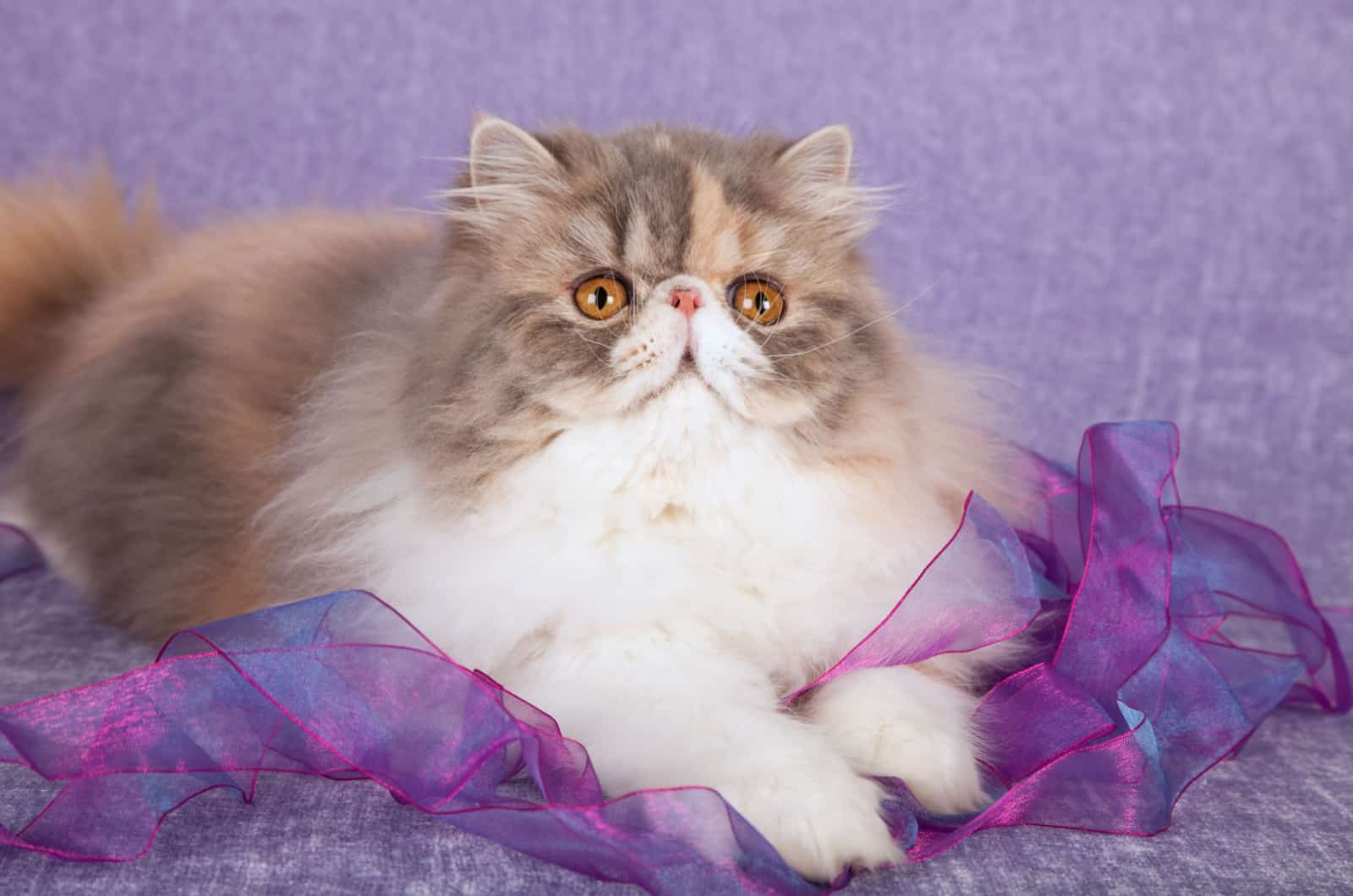
Female cats normally have two X sex chromosomes, meaning their chromosomal arrangement is XX.
Male cats normaly have one X sex chromosome and one Y sex chromosome, meaning their chromosomal arrangement is XY.
Now, in order for a cat to be a calico cat, it needs to have two X chromosomes.
For females, that is certainly a possibility, as their normal chromosomal arrangement is two X chromosomes.
However, male cats usually do not have two X chromosomes, so the only way for them to be calico is to have an extra X chromosome – which is very rare (and is explained below).
It is far more likely that a female cat will be (dilute) calico, compared to the chances of a male cat being (dilute) calico!
Male Dilute Calico Cats – The Rarest Of Them All
All male calico cats (including male dilute calico cats) have a genetic condition known as Klinefelter syndrome.
This is a result of the cat having XXY chromosomal arrangement, instead of the usual XY sex chromosome arrangement that most males have.
This extra X chromosome is the reason they’re calico in the first place.
The consequence of this extra X chromosome is that these male cats are usually sterile, therefore they cannot reproduce. As well as this, the affected cats usually have a wide range of health issues, such as diabetes and organ failure.
What’s The Difference Between Dilute Calico And Dilute Tortoiseshell Cats?
Many people mistake a dilute calico cat for a dilute tortoiseshell cat, and vice versa. Although they have very similar coat colors, there are ways to differentiate them.
Cats with diluted calico coats will have a three-color pattern, while cats with tortoiseshell coats will have a two-color pattern.
So which colors are we talking about?
[table id=175 /]
[table id=176 /]
Calico coloration (no matter if it’s regular or dilute calico), will always contain white spotting.
As you can see, the major difference is that tortoiseshell cats do not have any white colored fur, so if you ever wonder Oh, is this a calico or a tortoiseshell cat? – remember the “white color trick” and you will easily be able to identify which cat it is.
Another difference is the pattern of the colors – the calico pattern has noticeable patches of color, while that’s not the case for torties. For torties, different colored hairs intertwine, so you get this majestic mixture of the two colors.
What Is A Dilute Tabby Calico Cat (aka A Dilute Caliby Cat)?
If you didn’t know about dilute caliby cats until now – you were missing out! They are absolutely gorgeous kitties and one of my personal favorites when it comes to cat coat color and pattern combinations.
Just like regular calicos, the caliby is not a distinct cat breed. We are only talking about colors and patterns of the fur, which cats of many different breeds can have!
The names of these cats can be confusing, so let’s go over them one by one.
What Exactly Is A Tabby Calico Cat?
When you mix in a tabby coat pattern with a calico pattern and color combination – you will get a tabby calico cat!
This means that the cat will have the regular coat coloration and pattern of calicos:
• Large white patches of fur
• Black patches of fur
• Orange patches of fur
As well as that, the characteristic tabby stripes will show in the orange and black colored patches of fur!
What Exactly Is A Dilute Tabby Calico Cat?
The only difference between a regular tabby calico cat and a dilute tabby calico cat is the coat colors – dilute cats will have more muted versions of the regular calico fur colors.
To be more clear, a dilute tabby calico cat will have:
• Large white patches of fur
• Gray patches of fur
• Cream colored patches of fur
And of course, the gray and cream patches will have the characteristic tabby stripes!
Are There Common Personality Traits Among Dilute Calico Cats?
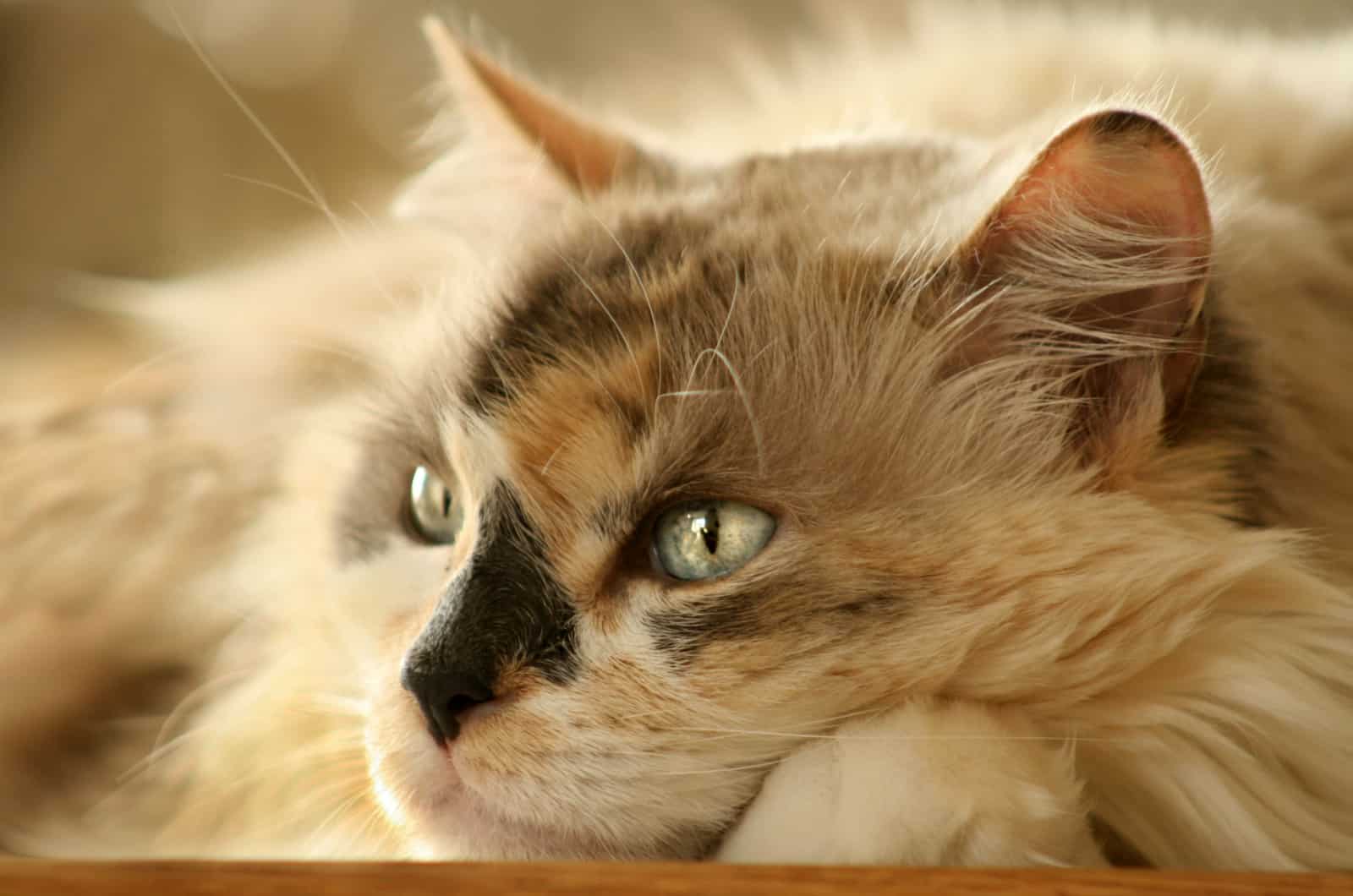
Although many people think calicos have some distinct personality traits, I’m sorry to disappoint, but they don’t!
This is because cat personality traits are tied to the cat’s breed and, as you know, calicos or dilute calicos are not a cat breed, but merely a coat color and pattern combination.
This means you may see cats of many different breeds being dilute calicos, and they will all have different personalities.
For example, some dilute calicos will be very energetic, while others might be a bit lazy. Some will be extra-friendly while others prefer being alone. Some will meow like crazy, while others prefer silence.
What’s The Dilute Calico Cat Worth?
If you’re really keen on getting a dilute calico kitten, I’m sure you’re interested in knowing the price you can expect to pay.
Well, there isn’t a set price – it depends on a few factors, such as:
🐾 What is the breed of the dilute calico cat?
🐾 Are you getting the cat from a shelter or from a breeder?
🐾 Is the breeder reputable or not?
🐾Will the breeder overprice the kitten because of its rarity?
🐾Is the cat male or female (males are rarer and usually more expensive)?
🐾 Is the cat purebred or a mixed breed (pure breeds are usually more expensive)?
In general, if you’re getting a kitten from a breeder, expect the price to be anywhere from $100-$2,000.
However, don’t be surprised if you encounter a much higher price. Some breeders intentionally overprice dilute calico kittens because of how rare they are and how difficult they are to breed.
If you find a very expensive dilute calico kitten, I suggest you take a look in your local cat shelter or cat rescue center to check if they have these adorable kitties.
If you’re lucky enough to find a dilute calico kitten (or an adult cat), you will certainly not pay as much as you would if you opted for getting a cat from a breeder.
Remember that the initial costs of getting a cat are considerable. You will have to get cat food, a cat bed, cat toys, as well as paying for a veterinary check up and possibly some vaccinations (if your cat hasn’t already been vaccinated).
What Does The Dilute Calico Cat Signify?
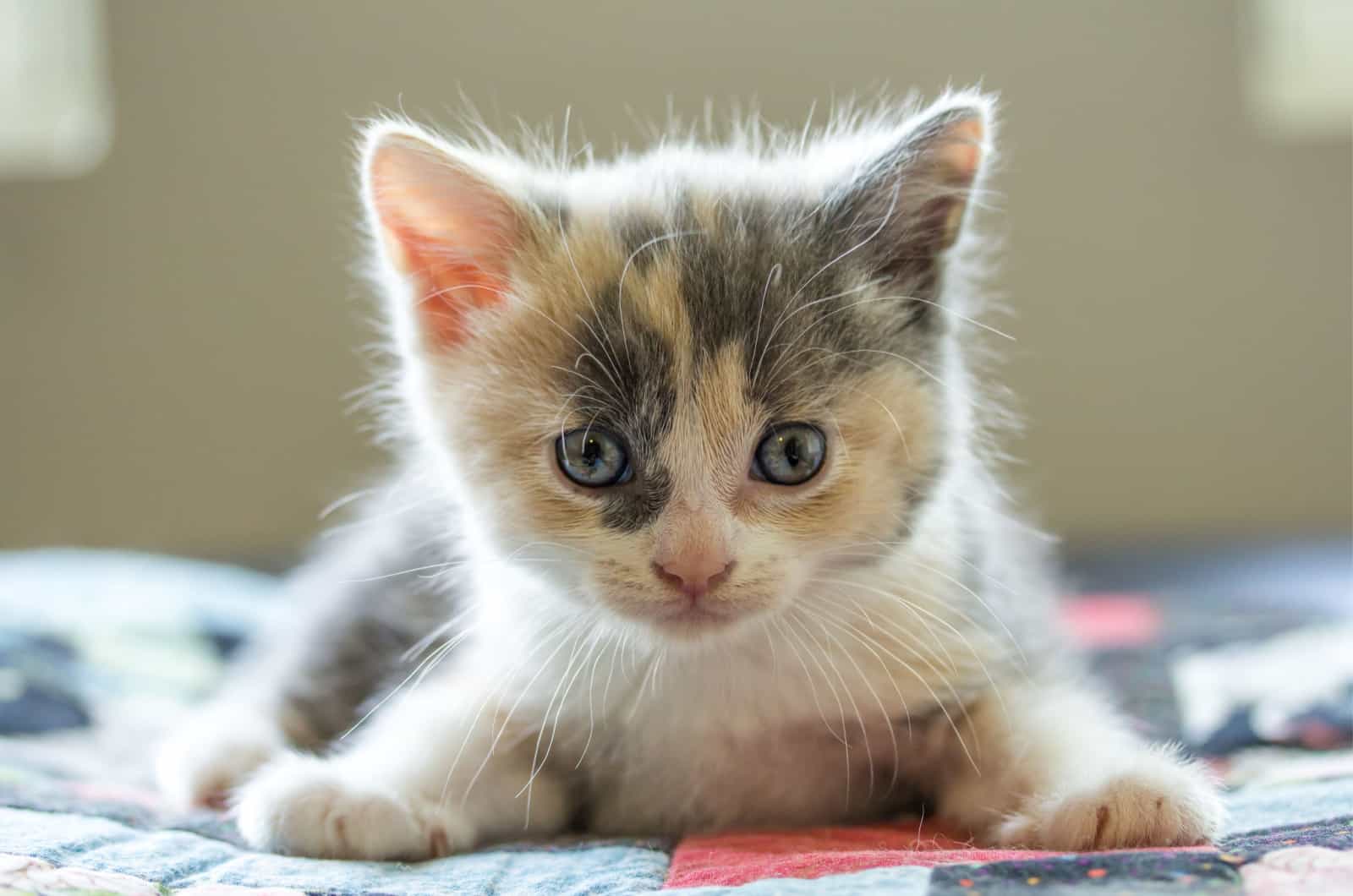
Now that we learned all the facts about dilute calico cats, let’s explore some folk tales about (dilute) calico cats…
🐾 It is believed that calicos were one of the most beloved pets among the Ancient Egyptians. We don’t have any proof of this, but I find it rather interesting, and it may even be true!
🐾 The people of Maryland, US were so fond of calicos that they even chose the calico cat to be the official cat of the state! How cool is that?!
🐾 Calicos are frequently referred to as “money cats” because many believe they will bring their owners luck (and money)!
🐾 Do you know about the Maneki-Neko figures? You will often find these figures around the entrances of homes or restaurants. They are Japanese figures that are thought to bring good luck, and they are based on Japanese Bobtail calico cats!
🐾 Again in Japan, their fishermen used to believe that calico cats are a good omen and that they would ensure their safety from strong winds and high waves out in the ocean!
FAQ
What Is The Difference Between Calico And Dilute Calico?
The only difference between standard calico and dilute calico cats is the color of the fur – dilute calicos don’t have such intense colors as regular calicos. In fact, the coat colors in dilute calicos are said to be muted. Therefore, orange will appear as cream, and black will appear as grey (or blue as some like to call it).
What Is The Most Common Color In A Dilute Calico Cat?
The most common coat color combination for dilute calico cats is white-grey-cream. It is also possible for a cat to have lilac or fawn instead of grey – but these two colors are much less common.
What Color Are Eyes Of Dilute Calico Cats?
There is no specific eye color for dilute calico cats. Their eye color can be brown, blue, green, or any other potential eye color that other cats have.
What Is The Lifespan Of A Dilute Calico Cat?
The lifespans of dilute calico cats will vary depending on the breed of the cat. For example, the Japanese Bobtail dilute calico cat has a lifespan of 9-13 years, while the dilute calico Persian cat will live anywhere from 12-17 years!
Are Dilute Calico Cats Worth More Than Regular Calico Cats?
Some breeders tend to charge higher prices for their dilute calico kittens in comparison with regular calico kittens. This is because dilute calico kittens are very rare and hard to breed. But does this mean that they’re worth more? The answer is up to you!
In Conclusion
I must say that all types of calico cats are gorgeous – but a dilute calico cat is really something special. Just think of their genetic background and how the genes have to align in order to create a dilute calico kitten!
Due to their aesthetic, dilute calico cats are favored by many cat enthusiasts. Their colors are absolutely mesmerizing; pastel cream, blue, lilac and fawn are very rare colors in the cat world, so seeing or owning a dilute cat is very special.
Dilute calico cats are not a distinct cat breed, as many different cat breeds have members that are dilute calicos. This also means that dilute calico cats don’t share any personality traits, and they don’t have a common size, weight, or share the same grooming needs.
I hope you enjoyed reading this article and it has helped answer some of your questions!
Related Articles:
• Are Calico Cats Hypoallergenic? Everything You Need To Know
• Orange Tabby Cat – 23 Facts About These Gorgeous Kitties
• Top 18 Long Haired Cat Breeds: Grey Stunners (With Pictures)

